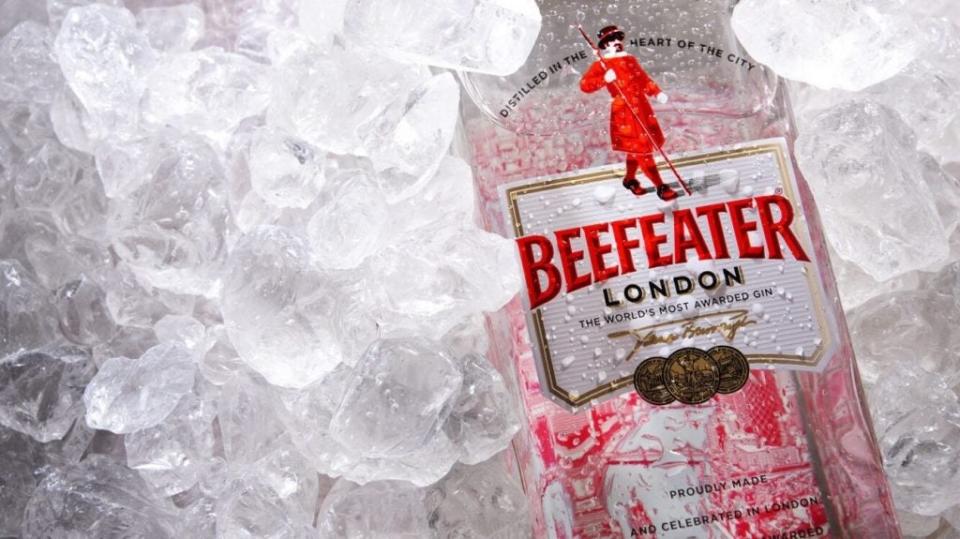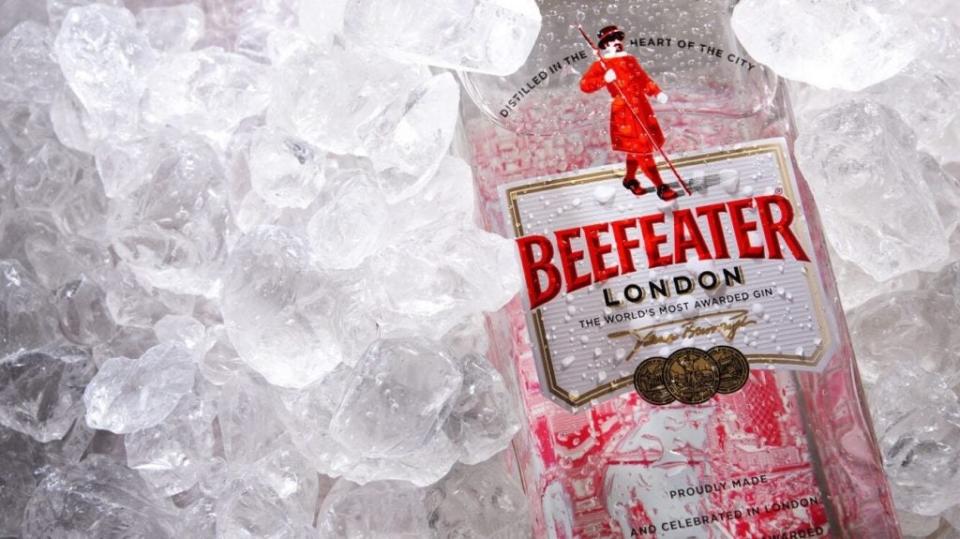Pernod Ricard is spending €25m ($27.1m) on a new distillery for its Ki No Bi gin brand in Japan.
The site, based 45 minutes away from the current site in the south of Kyoto city, has an increased capacity and is set to open in the back half of 2025.
Just Drinks met (virtually) with a group of Pernod Ricard executives to discuss the project, their outlook for the ‘ultra-premium’ Japanese gin and the French giant’s view of the broader gin category.
Dean Best (DB): You’ve got a new distillery coming on-stream for Ki No Bi. Where is the gin made at the moment?
Anna Schreil, VP operations at Pernod’s The Absolut Company arm (AS): I will leave it to Hiro to specify the details but the gin is currently made in Kyoto.
Hiroyuki Nagai, head of distillery operations in Kyoto (KN): The Kyoto Prefecture is made up of a number of the different cities and we are currently located in Kisshouin, which is a southern part of Kyoto city.
DB: When the new distillery is open, will the current site close?
HN: That, to be honest, is undecided. Whilst we are definitely going ahead with a new distillery, we are currently assessing how we are able to repurpose, or put some value, into the current site as well.
DB: What’s the plan for the workforce?
HN: There will be no job loss at all whatsoever. In fact, this will give opportunity for more people in Kameoka city to increase their employment opportunities.
DB: How many staff do you have working at the current site and how many will you have at the new facility?
HN: We have about 20 FTEs, full-time equivalents, at the Kyoto distillery, It’s a very small operation. Out of that, we have a brand site home and we have operations. We’ve got other corporate services like finance and HR as well, so the bottling and the distillery operation is under ten.
DB: And then the new facility?
HN: When we move, our aim is to increase the full-time employment by five.
DB: Pernod Ricard says the new distillery will be ‘carbon neutral’. That’s a term that’s come into the spotlight across FMCG. How do you define ‘carbon neutral’?
AS: I think in general, when we speak about carbon neutrality, we typically speak about Scopes 1 and 2, so our own operations and the energy consumed for our own operations. Typically, carbon neutrality would be achieved through our usage of renewable energy, like green electricity, typically. I will let Hiro speak to the specifities for the new distillery of Ki No Bi.
HN: So, in Japan, the rates for normal power and the rate for carbon-neutral power are different. All of the power stations declare their generation of energy and what is from coal and fire against what is geothermal, hydro solar power, etc, etc. This portion of the rate is dearer [but] we are able to buy the power from that particular sector. Obviously, in any power station, they’re not able to store energy [and say] ‘this has come from this part and this has come from that part’ but there is a quite strict, third-party, auditing happening to all the power stations, so that they’re not able to ‘cheat’ the total amount of energy that has come from that sector and sell a greater amount.
Currently, in our distillery, we’re using a gas boiler. Now when it comes to gas, there is no choice but there is a CO2 emission. When we move to the new factory, we are going to use a 100% electrical boiler and, in fact, we will use electric forklift trucks as well. We will eliminate the use of gas completely out of the operation and continue to pay the higher rate that the power station declares.
DB: Will the site use offsets in any way to get to carbon-neutral status?
HN: No, we’re not.
DB: Are Ki No Bi sales growing in value and volume terms? What figures can you provide?
Murielle Dessenis, global marketing VP for gins (MD): Yes, we are definitely still [growing] double-digit. I will say that, in a more difficult gin environment, Ki No Bi is performing quite impressively. The brand has done an amazing job and, even this year, while it’s more difficult for other brands, it has been growing significantly and taking share on ultra-premium.
DB: How would you define ultra-premium?
MD: We have two definitions. I will start with price. Price points of course vary substantially between markets, but generally, ultra-premium gins are typically €35 and above per bottle.
Then I will say, from a more qualitative standpoint, where you can find Ki No Bi, it’s clearly in the finest places. It’s really for connoisseurs, not only gin connoisseurs actually, it’s also for what we call people who are passionate about Japanese luxury, who are attracted to Japan savoir-faire on whisky. They’re also fascinated about having an option on gin. The fact [Ki No Bi] is also coming from Kyoto is clearly a factor of all the craftsmanship in everything we have done. The work with local botanicals is key. I would say that, on a more qualitative side, it’s really this idea of connoisseurs or explorers in spirits. We have both in spirits.
DB: Where are the principal markets for Ki No Bi geographically?
MD: So, clearly, today, Japan is still the home and the largest market but we have also a fantastic success story in Italy, in GTR [global travel retail], in China and India, so we can see some places where the brand is growing. A little bit of France also. These are the markets where the brand is growing.
DB: Has a category developed yet around Japanese gin or is it still too early? What are the other gin styles that a brand like Ki No Bi is competing with?
Adrien Timpano, head of global marketing for Ki No Bi: In terms of the Japanese style of gin, so far it’s been very much a Japanese take on London dry for the most part, for example. So, besides Ki No Bi, there is Suntory Roku and some other brands, who are true to the London style but who use botanicals that are true to Japan. People now recognise those botanicals because most of them are well-known globally, so this is what they expect from the Japanese gin category. From a global market standpoint, it’s also reassuring that it’s a well-known category for them, the gin category, but with an Asian or Japanese twist. That is important because, as Murielle mentioned, it’s all about exploring within something that’s kind of familiar already.
DB: As a team, how would you say the overall gin category performing at the moment? It’s quite challenging out there. Do you think styles like Japanese gin are a way to reignite consumer interest?
MD: What we believe on gin is that clearly it’s been, I would say, eight years of double-digit growth. We call it the ‘gin-naissance’. I remember in my first year at Pernod Ricard, everyone was talking about cycles. That’s true. We are in an industry of cycles. Also, about the cycle of TGV – Tequila, gin, vodka.
It’s true that gin now is entering a new life-stage and a new growth cycle.
Murielle Dessenis
The reality for gin is that, yes, it’s true that gin now is entering a new life stage and a new growth cycle. That’s for sure. We can see in the projections that the category is not growing anymore double-digit but still the category is growing and still the category is expected to premiumise – the highest level of growth will be driven by super-premium and ultra-premium. That’s what we know.
What we also know is gin’s growth is really based on key consumer trends, which are really lasting in spirits. I would start with what we call mindful drinking, botanicals, which is providing this more clean and natural perception. The second driver is really this expectation of the younger adult generation of having a serious spirit but not one taking itself seriously. They call it ‘cool sophistication’, which is not anymore, for example, the whisky of my dad or another kind of very serious category.
I will say a third pillar is around visualisation and the digital aspect of gin. Gin is the number two category among the most talked about on digital when actually it’s clearly not the number two category in spirits. So, we believe clearly that gin is entering a new life stage but it’s really anchored into long-term consumer trends.
DB: You’re preparing a new distillery with a bigger capacity, so you must have confidence in your projections for Ki No Bi. What gives you confidence the brand can capitalise on those trends?
MD: First of all, I will respond as a portfolio. We have an unlimited portfolio. We have Beefeater, which is one of the only brands that’s growing on [the] premium segment. It’s a brand which is clearly not only beating the market but with a strong equity. It really owns the premium segment, still a lot of work to be done but still it’s the core pillar.

Then you have Malfy, the Italian Queen of super-premium. It started as a flavoured gin but actually with a very strong SKU originally that is performing very well and helps us to go beyond flavoured gin [to] more like a lifestyle brand. It’s very quickly growing in most of the markets.
And then on ultra-premium, we have two gems. Monkey 47 is clearly performing well, especially in the US we have great results and the equity of the brand is fantastic.
Last but by no means least is Ki No Bi, which is starting with a very specific, ultra-premium, connoisseur expectation, bringing tradition, heritage, craftmanship, the quality of the process of production and also with this Japanese, I would say, personality, which is super-authentic. I feel comfortable that we have as a group a superb portfolio of brands, which have momentum but also have really strong equity, which is key.
DB: In terms of geography, will the focus for Ki No Bi be the group of markets that you outlined earlier: Japan, Italy, France, India, China?
MD: They will be the top priorities with more [markets] also but, yes, we’re going try to really focus on these key markets to really build success stories and then scale up internationally.
DB: Will there be a mix of off- and on-premise or focus on the on-premise?
MD: We know that on-premise and advocacy are at the heart of the success of this brand because it’s a brand that you need to hear the narrative of, a brand that you need to taste, a brand that you need to hear bartenders explain to you the story, so on-trade and advocacy should be still at the heart. And then we’ll see selective off-trade but for us the key work is the seeding and advocacy work. We have a gin with strong credentials and we know that it’s a key asset versus, for example, other Japanese brands, this savoir-faire that is really making a difference and what is giving you an edge. That’s why for us on-trade and advocacy is really where we need to win first.
DB: Do you think it will be a challenge to get drinkers to try a Japanese gin over another type of gin? It’s quite an emerging area versus some of the more established parts of the gin category, isn’t it?
MD: What I love in gin is that I don’t believe – and we know it’s not the case, actually – that it’s one gin, one brand, which is very different from other spirit categories. The beauty of gin is versatility. My master distiller here based in London used to say that gin is a chameleon. Even for consumers, you can start with a gin and tonic when you’re leaving your office in London and then you might visit some rooftop [bar] with Malfy but then you might go with specific people to a nice hotel with bartenders and it’s ‘Okay, make me discover something that I don’t know.’ This is where Ki No Bi is a little gem. We know there is a lot of navigation through gin brands and this is why we want to have a very balanced portfolio of brands.
DB: And on pricing, thinking about consumer confidence, any concerns you may struggle to get drinkers to try Ki No Bi?
MD: It’s a fair question. I will say that, at this stage what we’re seeing from this year, is that brands like Ki No Bi and Monkey 47 are not the ones which have been the most impacted. It’s more impacting the brands on the premium price target. It could [happen] at a certain point, maybe, but, so far at the places where actually we are selling this product, price sometimes is also a token of quality. We are monitoring this very carefully but also you are paying by the glass, by the cocktail, so it’s not just the price of a bottle. It’s really also a gin experience that you have: the place, the beautiful drink with the fantastic ingredients and the best gin. I would say that so far we don’t see any concern on the price we have on Ki No Bi but we are keeping an eye that’s for sure.
““We have a superb portfolio of brands, which have momentum” – Pernod Ricard on prospects in gin” was originally created and published by Just Drinks, a GlobalData owned brand.
The information on this site has been included in good faith for general informational purposes only. It is not intended to amount to advice on which you should rely, and we give no representation, warranty or guarantee, whether express or implied as to its accuracy or completeness. You must obtain professional or specialist advice before taking, or refraining from, any action on the basis of the content on our site.
EMEA Tribune is not involved in this news article, it is taken from our partners and or from the News Agencies. Copyright and Credit go to the News Agencies, email news@emeatribune.com Follow our WhatsApp verified Channel





